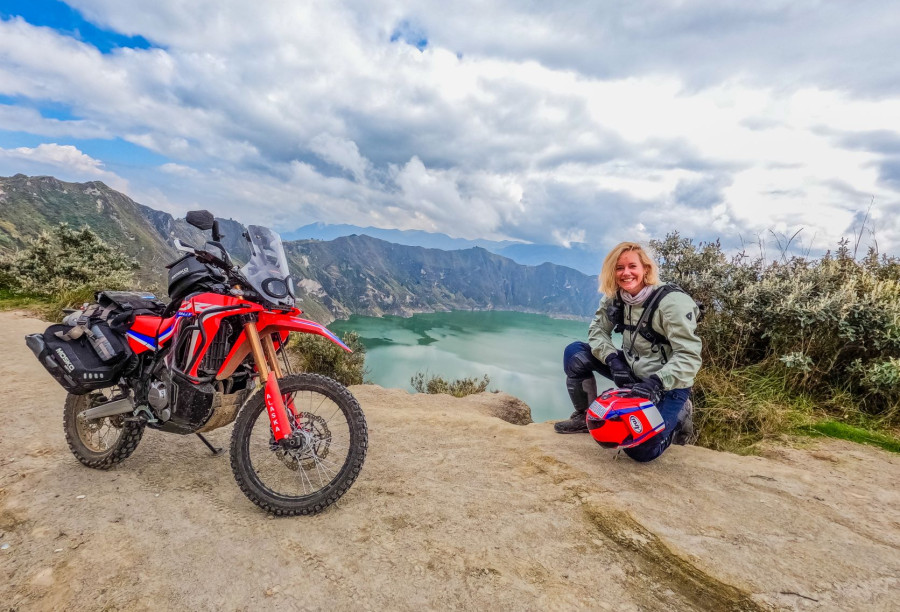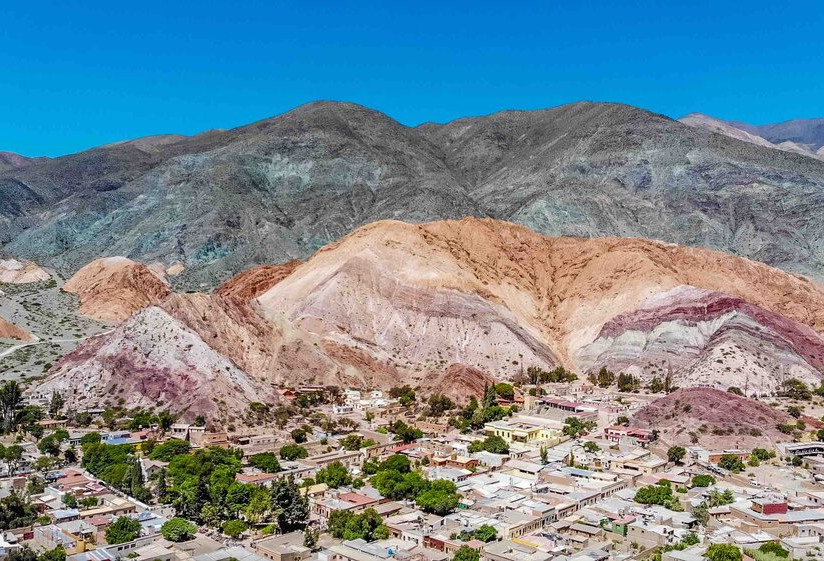
The “Ruta de las Lagunas” is an epic motorcycle ride across the Bolivian altiplano, the Andes high plateau. It's a notoriously adventurous route with gorgeous bright-colored lagoons occupied by thousands of flamingos in front of full of snow-capped volcanoes. Riding this route is not for the faint-hearted though, but if you are up for the challenge, I promise you, you won't regret it!
Here are my 10 tips to get the most out of your visit to this stunning part of the world.
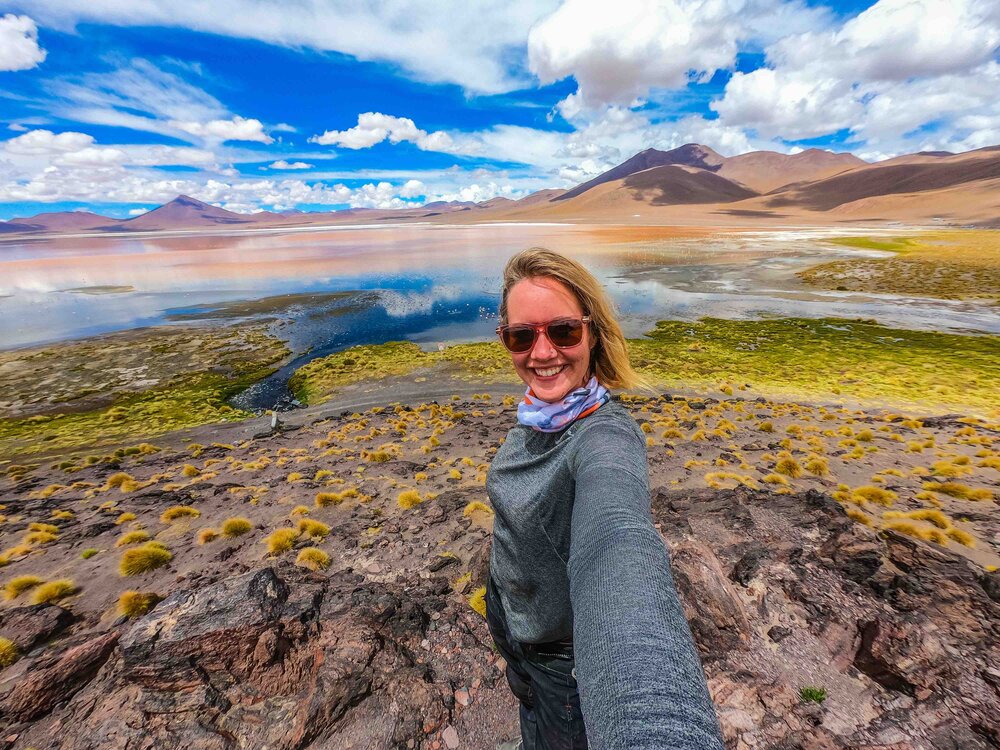
Bring enough food and fuel
Riding the Ruta de las Lagunas is mostly done by organized tour groups. There are not many people traveling by themselves through this region. That means that all accommodation is geared towards accommodating groups of people together in dorm rooms. Private rooms are not always available.
The companies that organize these 4x4 tours bring their own food with them, so there are not many restaurants along the Ruta de las Lagunas, either!
I was not aware of this situation and ended up with left-overs from tour groups, and got fed by locals who shared their meal with me. So, bring your own food, or plenty of snacks as a bare minimum.
The entire trip from San Pedro de Atacama until Uyuni is about 450 kilometers. The first petrol station you'll encounter is located in San Christobal, around 90 kilometers before Uyuni. This means that you'll need to bring fuel to last you at least 350 kilometers. In case you do run out before you reach San Christobal, you don't have to panic. Try your luck with locals, or even better approach tour groups. They bring spare fuel with them and with a big smile you are very likely to buy a few liters of them. But as always, it's better to come prepared!
In episode 57 you can see my first day of riding the Ruta de las Lagunas!
2. Avoid other tourists by knowing the tour group schedules
The Bolivian altiplano is huge and you'll find yourself riding alone most of the time. However, there are a few tourist sights along the way, such as the hot springs, the geysers and the rock tree, which are mandatory stops for tour groups. Come here at the wrong time of the day, and you will see 30 - 40 land cruisers parked with a sea of tourists flooding the sight.
If you want to have the place for yourself, try to figure out what the best times are to visit. The app ‘iOverlander' is a good resource to start with. You'll find comments indicating at what times the tour groups were there, hence at which times you need to make sure you are somewhere else! Another way is to ask locals or even better the 4x4 drivers of those tours. They will give you plenty of information about their schedule.
3. Don't attempt this route in a 2WD!
Of course, I am not talking about a two-wheeled motorcycle. Motorcycles will do fine and their riders will have a blast unless they are too heavily packed! The road is not easy, and the heavier your motorbike is, the more difficult it is to ride the Ruta de las Lagunas.
If you are traveling in a 2WD car, you should not ride this route. Especially during the rainy season, the route can easily become a total nightmare for you and your car. However, if you are unstoppable and determined to come and see the lagoons, try to follow the organized 4WD touring company's cars. They know the tracks and following them will ensure you that you'll ride the best possible tracks and don't get bogged down somewhere all by yourself.
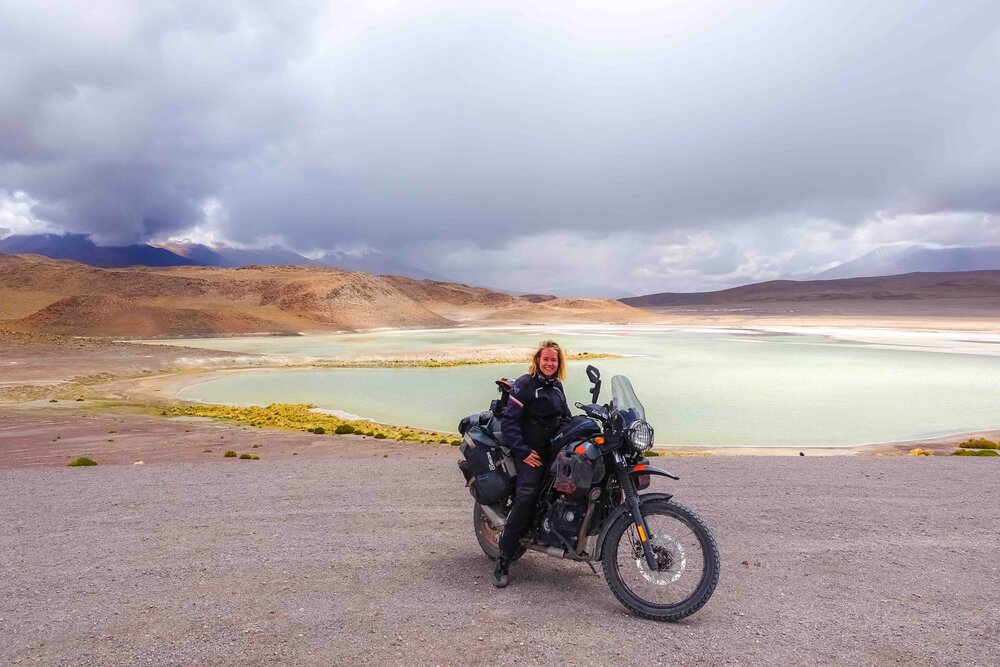
4. Expect to get lost
In theory, there is a northern and a southern route through this region. These two main routes of Ruta de las Lagunas are the most corrugated ones, which is why the tour cars create new tracks to avoid too bumpy rides for their guests. In reality, there are now about 5,000 different routes and tracks you can take. There are car tracks everywhere on the plateau.
Truth be told though, I was following what looked on Maps.Me as the main track and this led me straight through a narrow canyon which turned out to be only passable by motorcycle.
Even though it is tempting to leave the main track and follow a better track, I ask you not to do so.
First of all, because this is a National Park with a fragile ecosystem. Secondly, you don't want to contribute to the creation of all these new tracks in an otherwise beautiful desolate landscape. Thirdly, contrary to local guides who know the area as well as the back of their hands, you simply don't know where all these unmapped tracks lead to and riding on them might very well get you into trouble.
Watch episode 58 to see me get lost and ride through this very narrow canyon on the main road.
5. Expect difficulty in finding accommodation
Tour groups get priority at the guesthouses and usually book in advance. This means that you might face fully booked hostels when you just rock up as I do. I visited the Bolivian Altiplano in February though, during the low season, and was lucky. I managed to find a bed each night. Don't expect to find a bed easily when you come here between May and October when it is dry season and therefore high season for touring companies.
Another option may be to bring a tent with an excellent sleeping bag with you when you ride the Ruta de las Lagunas during the dry season. Keep in mind that it may be dry, but it is also winter in Bolivia during that time with temperatures dropping below zero at this altitude!
At Laguna Hedionda, I stayed at the fancy Los Flamingo Ecolodge. I got a 30 dollar discount for just showing up and not booking through Booking.com, but I recommend booking ahead if you want to stay here in a decent room. Even during the low season, I had to share the lodge with a group of 25 Koreans. They gave me the only room that was left, which had three holes in the roof.
6. Get acclimatized beforehand
Do not underestimate the effect that altitude has on you. If you don't get acclimatized beforehand, you will not have a good time riding this route!
Some parts of the Lagunas route are at 5,000 meters altitude. Without proper acclimatization, you will experience headaches, possible vomiting, and worst-case scenario: altitude sickness. This is a serious and life-threatening condition that you shouldn't underestimate. But even if it's just headaches, they can be so severe that you can't enjoy the journey and the scenery anymore. That would just be such a waste of all the effort you took to get here to ride this route!
If you are already traveling through South America overland, it is likely that you've already experienced the Andes in either Peru or Chile/Argentina, so you'll be fine. But if, for some reason, you didn't include the Andes in your travel plan, try to spend some time at altitude before you start riding the Ruta de las Lagunas by yourself.
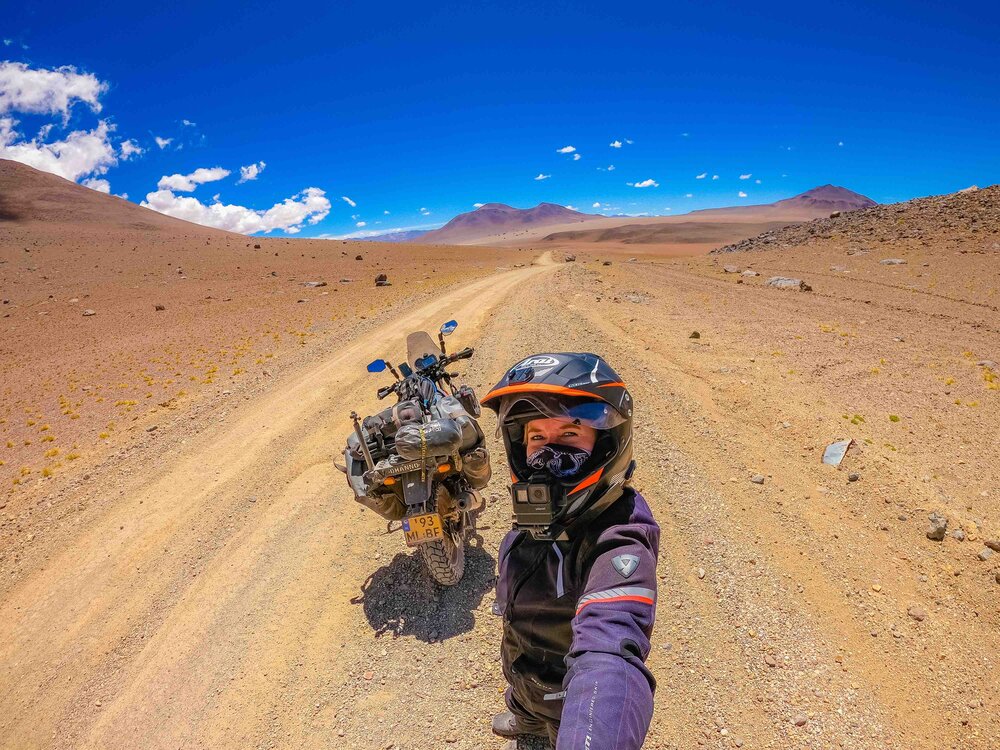
7. Take it easy!
Try to allow for enough time to complete the Ruta de las Lagunas. As an absolute bare minimum, you'll need two days to ride from San Pedro de Atacama to Uyuni. But this will be a very tiring and stressful journey. I have ridden this route in 4 days, which was perfect. The route is challenging but beautiful. I had plenty of time to stop for photos, take in the sights and views, and to spend some time overlooking the lagoons with all of their colorful flamingos.
If you are traveling during the rainy season, like me, your days are most likely cut in half anyway because of the torrential downpours which occur in the afternoons. Expect thunder and lightning to go with that as well. Those are conditions in which you really don't want to find yourself out and exposed. Trust me!
You can check episode 59, where I survived a torrential downpour during my ride on the altiplano.
8. Be aware of checkpoints and ‘toll ways'
Right after Laguna Colorado, there is a checkpoint where they check and register your National Park entrance ticket you bought beforehand. So, don't throw away your entrance ticket after you have entered the National Park! If you are traveling from the opposite direction, I am not sure where you can buy the entrance ticket for the Nationale Park. Maybe at this checkpoint? When I continued my journey, I didn't see any other park offices or checkpoints.
A second thing to be aware of are the so-called ‘toll ways'. When I visited Laguna Kayla, the road I wanted to take was blocked with a lever and there was a friendly man asking for a toll. It seemed to me a very random place for a ‘toll road' and the track you are supposed to pay for was even worse than the road before the ‘toll point'. However, this man hands you a ticket and it all seems relatively legit. Cost: 10 Bolivianos, about 1,50 USD.
9. Expect long lines at the border and how to get around them
At the Chile-Bolivia border “Hito Cajon” I started my Ruta de las Lagunas route. I was not alone. All the 4x4 tour groups take this border crossing too, and they do so in the early morning right after the border office opens. Expect about 40 vehicles trying to get into Bolivia and huge lines for the immigration office. It takes such a long time that the tours even serve breakfast right outside the immigration office.
To avoid this situation, arrive at the border later, say around 10 am. Or be a bit rude and skip the line, as I did. I was the only one traveling by myself and the tour groups had to wait for each other anyway before they could continue their journey. So, they didn't mind letting me go first as a single traveler.
In episode 56 you can see me skip the line and enter Bolivia to ride the Ruta de las Lagunas.
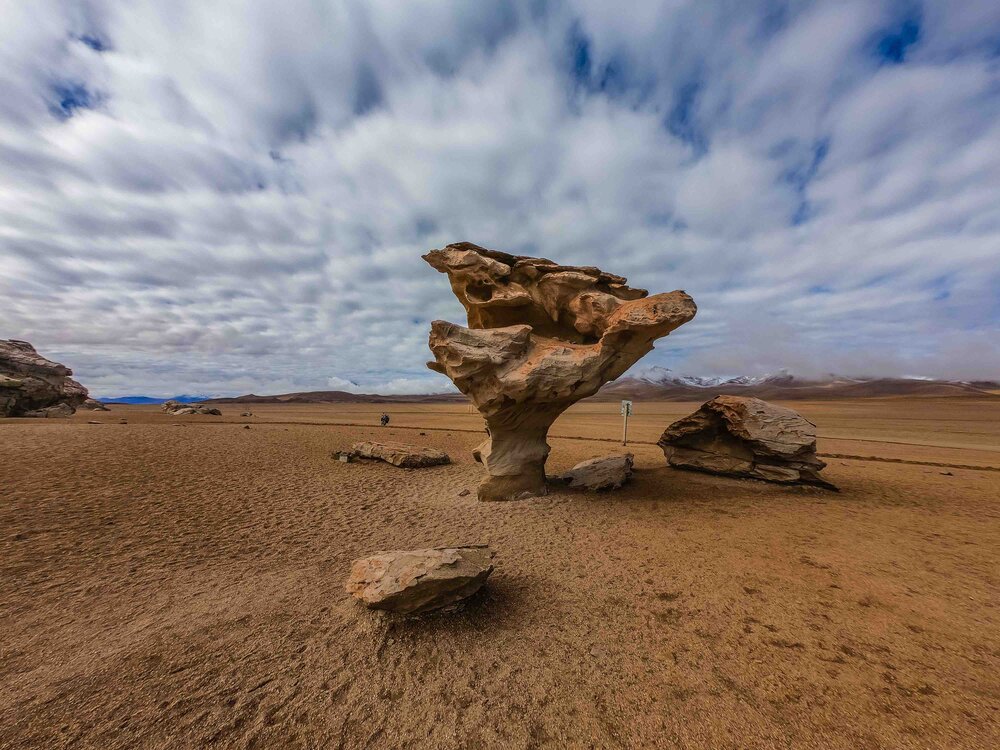
10. Change enough money in San Pedro de Atacama
There are plenty of money changers in San Pedro de Atacama who will happily change your Chilean pesos (or Argentinean pesos, Euros or US dollars) into Bolivianos. This is your last opportunity to do so! There are no money changers at the border and no ATM's on the Bolivian altiplano.
If you somehow fail to change money and are in desperate need of local cash, I suggest you stop a 4x4 heading in the opposite direction. You are likely to be able to change your money with travelers that are leaving Bolivia to go to Chile.
How much Bolivianos you need? It all depends, but a basic room costs around 50 Bolivianos and a meal between 10 to 15 Bolivianos.
That's it! Now you know all the practical stuff for riding the Ruta de las Lagunas in Bolivia.
Details of my journey
Vehicle: Royal Enfield Himalayan motorcycle (411 cc)
When: February 2020 (read: in the middle of the rainy season)
Trip duration: 4 days from San Pedro de Atacama (Chile) to Uyuni (Bolivia)
Which route: Southern route. Click here to view my route in Google Mymaps.
Itinerary: Day 1 - San Pedro de Atacama - Hot Springs (100 km). Day 2 - Hot Springs - Laguna Colorado (55 km). Day 3 - Laguna Colorado - Laguna Hedionda (85 km). Day 4 - Laguna Hedionda - Uyuni (200 km).
Well written and well advised Noraly.


